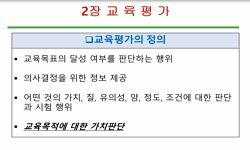본 연구는 가상 인간이 광고모델로서 실제 사람 모델과 비교해서, 소비자들에게 어떻게 인식되고, 어떠한 평가를 받는지를 정보원 효과와 소비자 반응 측면에서 분석하고자 하였다. 이를 살...
http://chineseinput.net/에서 pinyin(병음)방식으로 중국어를 변환할 수 있습니다.
변환된 중국어를 복사하여 사용하시면 됩니다.
- 中文 을 입력하시려면 zhongwen을 입력하시고 space를누르시면됩니다.
- 北京 을 입력하시려면 beijing을 입력하시고 space를 누르시면 됩니다.

가상 인간, 광고모델로 효과적일까?: 정보원천에 대한 평가와 소비자 반응 비교 = Are Virtual Humans as Effective as Real Humans in Advertising?: A Comparative Study on the Evaluation of Information Sources and Consumer Responses
한글로보기https://www.riss.kr/link?id=A109271630
-
저자
이청림 (경기대학교)
- 발행기관
- 학술지명
- 권호사항
-
발행연도
2024
-
작성언어
Korean
-
주제어
가상 인간 ; 버추얼 휴먼 ; 매력도 ; 신뢰도 ; 적합도 ; 소비자 저항 ; Virtual Human ; Attractiveness ; Credibility ; Endorser-Produdt Fit ; Consumer Resistance
-
등재정보
KCI등재
-
자료형태
학술저널
-
수록면
77-94(18쪽)
- DOI식별코드
- 제공처
-
0
상세조회 -
0
다운로드
부가정보
국문 초록 (Abstract)
먼저, 광고모델로서 가상 인간은 실제 인간과 비교할 때, 모델의 매력도와 제품과의 적합도 측면에서는 차이를 나타내지 않았다. 그러나 신뢰도 측면에서 가상 인간은 실제 인간 모델에 비해 낮게 인식되는 것으로 나타났다. 둘째, 가상 인간 모델과 실제 인간 모델에 대한 호감도와 해당 모델이 광고하는 제품에 대한 태도, 해당 제품의 구매의도를 비교분석한 결과, 제품에 대한 태도와 제품 구매의도는 광고모델에 따라 차이를 나타내지 않았다. 그러나 광고모델에 대한 호감도는 가상 인간보다 실제 인간으로 설정한 조건에서 높게 나타났다.
마지막으로 가상 인간의 광고에 대한 소비자 저항이 높을수록 가상 인간 광고모델에 대한 태도와 해당 광고 제품 태도에 부정적인 영향을 주며, 이 두 변수를 매개로 해당 제품 구매의도에 부정적인 영향을 주는 것으로 나타났다. 따라서 가상 인간에 대한 저항이 높을 수 있는 소비자 기반이 크다면 가상 인간을 광고모델로 선정하는 것에 신중을 기해야 할 것이다.
본 연구는 가상 인간이 광고모델로서 실제 사람 모델과 비교해서, 소비자들에게 어떻게 인식되고, 어떠한 평가를 받는지를 정보원 효과와 소비자 반응 측면에서 분석하고자 하였다. 이를 살펴보기 위해 동일한 인물을 가상 인간으로 설정한 조건과 실제 인간으로 설정한 조건으로 구분하여 실험 연구를 진행하였다. 본 연구를 통해 도출된 결과를 요약하면 다음과 같다.
먼저, 광고모델로서 가상 인간은 실제 인간과 비교할 때, 모델의 매력도와 제품과의 적합도 측면에서는 차이를 나타내지 않았다. 그러나 신뢰도 측면에서 가상 인간은 실제 인간 모델에 비해 낮게 인식되는 것으로 나타났다. 둘째, 가상 인간 모델과 실제 인간 모델에 대한 호감도와 해당 모델이 광고하는 제품에 대한 태도, 해당 제품의 구매의도를 비교분석한 결과, 제품에 대한 태도와 제품 구매의도는 광고모델에 따라 차이를 나타내지 않았다. 그러나 광고모델에 대한 호감도는 가상 인간보다 실제 인간으로 설정한 조건에서 높게 나타났다.
마지막으로 가상 인간의 광고에 대한 소비자 저항이 높을수록 가상 인간 광고모델에 대한 태도와 해당 광고 제품 태도에 부정적인 영향을 주며, 이 두 변수를 매개로 해당 제품 구매의도에 부정적인 영향을 주는 것으로 나타났다. 따라서 가상 인간에 대한 저항이 높을 수 있는 소비자 기반이 크다면 가상 인간을 광고모델로 선정하는 것에 신중을 기해야 할 것이다.
다국어 초록 (Multilingual Abstract)
Second, in terms of favorability, the real human model was rated higher than the virtual human model. Despite this, there was no significant difference in consumers' attitudes toward the advertised product or their purchase intentions.
Finally, the study also found that higher consumer resistance to virtual humans was associated with more negative attitudes toward the virtual human model and the advertised product, as well as a lower intention to purchase the product. Therefore, if there is significant consumer resistance to virtual humans, careful consideration should be given when selecting a virtual human model for advertising.
This study aimed to analyze how virtual humans are perceived and evaluated as advertising models compared to real human models, focusing on information source effects and consumer responses. To investigate this, an experiment was conducted under the a...
This study aimed to analyze how virtual humans are perceived and evaluated as advertising models compared to real human models, focusing on information source effects and consumer responses. To investigate this, an experiment was conducted under the assumption of selecting a new advertising model for a newly launched perfume product. The experiment compared conditions where the same individual was represented as either a virtual human or a real human. The key findings of the study are summarized as follows:First, as an advertising model, virtual human did not differ significantly from real human model in terms of attractiveness and fit with the product. However, virtual human was perceived as less credible than real human model.
Second, in terms of favorability, the real human model was rated higher than the virtual human model. Despite this, there was no significant difference in consumers' attitudes toward the advertised product or their purchase intentions.
Finally, the study also found that higher consumer resistance to virtual humans was associated with more negative attitudes toward the virtual human model and the advertised product, as well as a lower intention to purchase the product. Therefore, if there is significant consumer resistance to virtual humans, careful consideration should be given when selecting a virtual human model for advertising.
동일학술지(권/호) 다른 논문
-
돈에 대한 태도 관련 국내외 연구동향 분석: 2010-2023
- 한국소비자학회
- 김민정
- 2024
- KCI등재
-
대기시간이 서비스 만족에 미치는 영향에 있어서의 기대의 매개효과
- 한국소비자학회
- 석관호
- 2024
- KCI등재
-
쇼핑채널의 특성이 구매 후 인지부조화에 미치는 영향: 모바일 라이브커머스와 모바일 종합쇼핑몰과의 비교를 중심으로
- 한국소비자학회
- 진가예
- 2024
- KCI등재
-
서비스 실패 상황에서 챗봇의 의인화가 고객 분노와 사과수용의도에 미치는 영향
- 한국소비자학회
- 전은미
- 2024
- KCI등재




 KCI
KCI KISS
KISS






